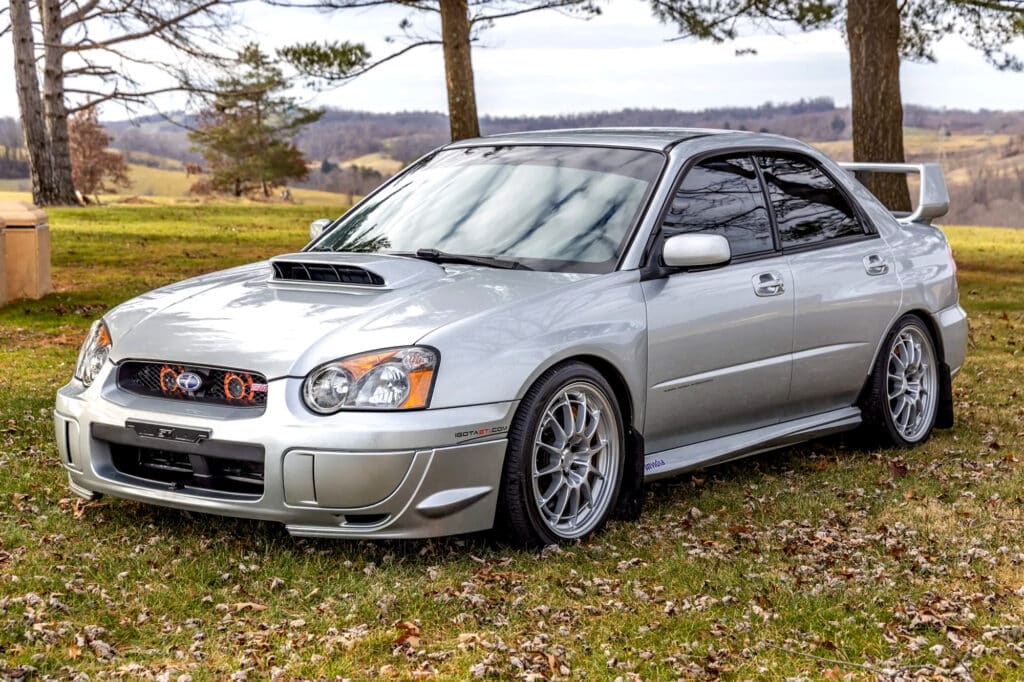Window tinting has long been a popular choice among car owners, with tinted windows a common sight on roads everywhere. Whether it’s for added privacy, enhanced style, or practical reasons like reducing glare and heat, many drivers choose to have their car windows tinted.
However, the rules around this upgrade vary significantly from place to place. While smaller countries may have uniform laws nationwide, Canada’s vast geography means that each province and territory has its own regulations governing the level of tint allowed on your windows.
In this article, we’ll guide you through the window tinting laws in each of Canada’s provinces and territories, so you can stay informed and compliant no matter where you are.
Why Use Tinted Windows?
There are a lot of great reasons to go for tinted windows, and it’s not just about the looks.
However, when it comes to the front windshield and side windows, the rules are a bit more stringent. These windows areas need to allow a higher level of transparency so that pedestrians and other drivers can make eye contact with whoever’s in the driver’s seat.
While the rear windows can have a darker tint, the front windows usually need to be more transparent.
Tinting the rear windows can also offer added security. It makes it harder for prying eyes to spot valuables left in the backseat, like bags or electronics. This small step can be a simple deterrent against break-ins.
Sun protection is another big reason why people tint their windows. For those who spend a lot of time on the road, blocking out the sun’s rays can make a world of difference.
A good tint can reduce the amount of sunlight entering your car, keeping the interior cooler and more comfortable, especially during summer months.
Plus, it’s not just good for you—it helps protect your car’s upholstery too. Over time, exposure to sunlight can cause your seats and dashboard to fade or crack, but a tinted window film can keep your interior looking new for longer.
Let’s not forget about the reduction of glare. Whether you’re driving into the sun or dealing with bright headlights at night, glare can be a major distraction. While tinted windows can help with this, keep in mind they’re no substitute for protective eyewear.
Sunglasses are still a must for optimal vision, so always keep a backup pair in your car. If you don’t have your sunglasses handy, a darker window tint can help protect your eyes when you’re on the road.
Window Tinting Rules Across Canada

Window tinting is legal in Canada, but there are some important rules to follow. Each province has its own regulations in place, and these laws are designed to keep both drivers and law enforcement safe.
At the heart of these laws is something called Visible Light Transmission (VLT), which is the measure used to determine how much light can pass through your tinted windows. In simple terms, VLT tells you how “see-through” your window tint is.
The lower the VLT number, the darker the tint, because less light is allowed through. On the other hand, higher VLT means more light passes through, making the tint lighter and more transparent.
So, while tinting your windows is perfectly fine, you’ll need to make sure you’re staying within the legal limits set by your province. Find legal percentages below.
Alberta
Windshield: No tint allowed
Front side windows: No tint allowed
Back side windows: No restrictions
Rear window: No restrictions as long as the car has both rear view mirrors
Alberta’s window tint laws prohibit tinting the windshield or front side windows. However, when it comes to the rear side and rear windows, there are no restrictions on how much transparency you should maintain.
This means you can apply any level of tint to these windows, offering more flexibility for privacy and sun protection without violating provincial laws.
British Columbia
Windshield: Allowed to tint the top 75 mm (3”)
Front side windows: Not allowed
Back side windows: No restrictions
Rear window: No restrictions as long as the car has both rear view mirrors
The BC window tint law suggests that you’re only allowed to tint the top portion of the windshield, with a maximum tinting limit of 7.5 cm.
Tinting is not permitted on the front side windows, but there are no restrictions on the amount of tint you can apply to the rear side windows or the rear windshield. These windows can be tinted to any level of darkness.
Manitoba
Windshield: Top 127mm (5”)/less than 25% VLT
Front side windows: Must be over 50% VLT
Back side windows: No restrictions
Rear window: No restrictions
In Manitoba, you’re allowed to tint only the upper portion of the windshield, with a maximum limit of 12.7 cm (5”). Tinting on the front side windows is permitted, but the tint must allow at least 50% of light to pass through.
When it comes to the rear side windows and rear windshield, you utilize a tint film of any darkness level, as long as your vehicle is equipped with rearview mirrors on both the left and right sides.
New Brunswick
Windshield: 70% VLT tint allowed
Front side windows: 70% VLT tint is permitted
Back side windows: No restrictions
Rear window: No restrictions
You are permitted to tint your whole windshield in the province of New Brunswick; however, the film you use must block less than 30% of the light. The same transmission level can be applied to the front side windows.
You can use any level of tint on the rear side windows and the rear windscreen. While most Canadian jurisdictions mandate exterior rear-view mirrors, New Brunswick does not require them.
Newfoundland and Labrador
Windshield: No tint allowed
Front side windows: No tint allowed
Back side windows: No restrictions
Rear window: No restrictions
Unless it complies with the Motor Vehicle Safety Act, applying window tint on the windshield and front side windows is prohibited under Newfoundland vehicle equipment legislation. There are no limits on tinting the back side and rear windows.
NorthWest Territories
Windshield: No window tint permitted
Front side windows: No tint allowed
Back side windows: No restrictions
Rear window: No restrictions
Under the Northwest Territories Motor Vehicle Act, tinting on the front side windows and windshield is strictly prohibited.
However, the laws in the Northwest Territories do not specify restrictions for tinting the rear side windows or rear windshield. As a result, it’s generally understood that any level of tint is allowed on these windows, giving you more freedom in how dark you can go.
Nova Scotia
Windshield: No tint allowed
Front side windows: No window tint allowed
Back side windows: No restrictions
Rear window: No restrictions
In Nova Scotia, you are not allowed to tint your windshield and front side windows. On the contrary, there are no rules restricting tinting your rear passenger windows or windscreen.
Nunavut
Windshield: No window tint permitted
Front side windows: No tint allowed
Back side windows: No restrictions
Rear window: No restrictions
According to Nunavut province’s legislation, you are not allowed to put any sun-protective material on your windshield or front-side windows. On the other hand, there is no restriction on the use of tint for rear passenger windows or the windscreen.
Ontario
Windshield: No window tint recommended. 30% VLT on the top 7.5 cm may be legal
Front side windows: No window tint recommended. 30% VLT may be allowed
Back side windows: No restrictions
Rear window: No restrictions
Ontario’s tint law does not explicitly address the legality of front window tinting. However, you’re prohibited from operating a motor vehicle by the Ontario Highway Safety Act if any window located directly to the left or right of the driver’s seat significantly obscures the view of the inside of the car as seen from the outside.
Any degree of tint can potentially be fined; so, it’s better not to install window tint on the windshield or front side windows. Each police officer has to decide for themselves if your tint “substantially” blocks what you can see inside your car.
The front side windows can have a VLT of 70% only if they’re standard equipment on your car. That is, as long as they’re not an aftermarket add-on.
It’s worth noting that the legislation in Ontario does not explicitly permit aftermarket tinting on front side windows, nor does it define the precise proportion of VLT. It just states that windows should not significantly impair vision inside the car.
With that in mind, you should only tint your front side windows if you’re willing to take the risk. There are no laws prohibiting tinting the back side windows or the rear window.
Prince Edward Island
Windshield: No window tint allowed
Front side windows: No level of tint allowed
Back side windows: No restrictions
Rear window: No restrictions as long as the car has both rear view mirrors
You’re not allowed to use any aftermarket window tint on your windshield or front side windows in Prince Edward Island. Only transparent, non-tinted front shields or window stickers that do not obstruct the driver’s field of view are legal here.
When it comes to the rear passenger windows, there are no limits on tinting, and any amount of darkness may be applied. The same applies to the rear windscreen as long as you have exterior rear-view mirrors.
Quebec
Windshield: Top 15 cm (6“) is allowed to be tinted
Front side windows: Must have over 70% VLT
Back side windows: No restrictions
Rear window: No restrictions as long as the car has both rear view mirrors
Quebec only allows tinting up to 15 cm on the upper part of the windshield. You can tint the front side windows, but they still need to let in at least 70% of the light.
When it comes to the rear passenger windows, there are no limits on tinting. You are free to apply whatever tint percentage to your rear windscreen as well.
However, to comply with the regulations in Quebec and the majority of other provinces in Canada, your car must have exterior rear-view mirrors.
Saskatchewan
Windshield: Top 7.5cm (3“) can be tinted
Front side windows: No window tint allowed
Back side windows: No restrictions
Rear window: No restrictions
Saskatchewan only allows window tinting up to 7.5 cm in the upper area of the windshield. Installing any aftermarket window tint on the front side windows of your vehicle is strictly prohibited.
Any amount of darkness may be applied to the back side windows and rear windscreen; there are no limitations.
Yukon
Windshield: 70% VLT permitted
Front side windows: 70% VLT allowed
Back side windows: No restrictions
Rear window: 70% VLT allowed
The RCMP states that front and rear windshields, as well as front side windows can have 70% VLT. Rear windows can usually have no restrictions on transparency.
Why Do These Rules Exist?

The main reason for these rules is safety. Law enforcement needs to be able to see into the car for identification purposes, and drivers need to have clear visibility out of their vehicles, especially through the front and side windows.
Darker tints on rear windows are generally allowed because they don’t obstruct the driver’s view of the road. It’s always a good idea to check your province’s specific regulations, as fines can apply if you’re caught with non-compliant tinting.
Penalties for Violating Tint Laws in Canada
Penalties for illegal window tinting vary across provinces, but in most cases, you can expect to face a fine of around $100 if you’re caught by authorities. However, the costs don’t end there.
In some regions, you may also be required bear additional costs for removing your tint, and failing to comply with tinting regulations could result in even higher fines—sometimes up to $600 or more. In extreme cases, your vehicle could be pulled off the road and sent for further inspection before you’re allowed to drive it again.
For example, in Quebec, if a police officer issues an inspection notice for your car, you’ll need to take it to an authorized inspection agent for a thorough check. If you don’t comply, you could face fines ranging from $438 to $865. If an illegal tint is found, you’ll have 48 hours to remove it.
Failure to do so could lead to additional fines between $154 and $274 each time you’re caught, and your car will be deemed unfit to drive. You’ll also be responsible for the cost of storing your vehicle until a photometric inspection confirms that the tint meets the legal requirements.
Summing Up
In most Canadian provinces, window tinting is allowed, but the rules and regulations can vary from one province to another. This means that if you frequently travel between provinces or plan on selling your car in the future, it’s important to be aware of the specific tinting laws in each region.
While there is no national standard for tint darkness, there are general guidelines you can follow to reduce the risk of fines:
- Windshield: No tint allowed.
- Front side windows: No tint allowed.
- Rear side windows: Tinting is generally unrestricted.
- Rear window: Tinting is generally unrestricted.
In Canada, window tinting is governed by both the Motor Vehicle Safety Act and provincial regulations. In most provinces, tinting on the windshield and front side windows is illegal, so it’s best to leave these windows untinted to avoid penalties.
Remember, both factory tint and aftermarket tint are considered when measuring the darkness of your windows. If your car already has factory-tinted windows, be sure not to exceed the legal limits when adding aftermarket tint.
Law enforcement takes illegal window tinting seriously, and penalties can be steep. Even in provinces where specific light transmission percentages aren’t clearly defined, officers can issue fines or citations if they believe your windows impair their ability to see clearly into your vehicle.
It’s also important to note that laws are not province-specific. If your vehicle is not in compliance with the window tint regulations of the province you’re in, you could still face penalties, even if the tint is legal in your home province.
To avoid trouble, always research the specific tinting laws in the province you’re in or plan to visit. That way, you’ll stay on the right side of the law, no matter where you are.
Have you ever considered tinting your car windows? Let us know your thoughts by leaving a comment below.

